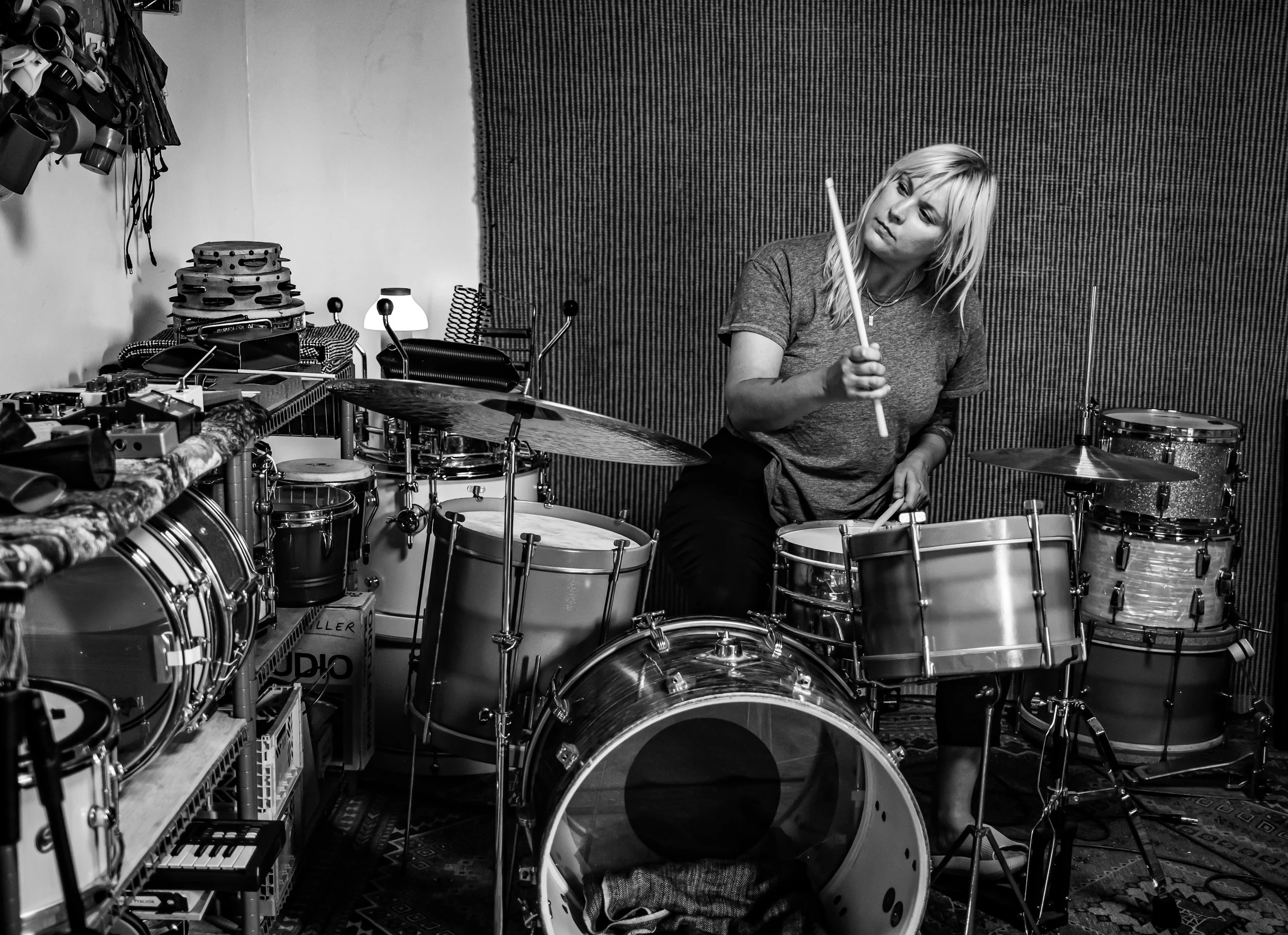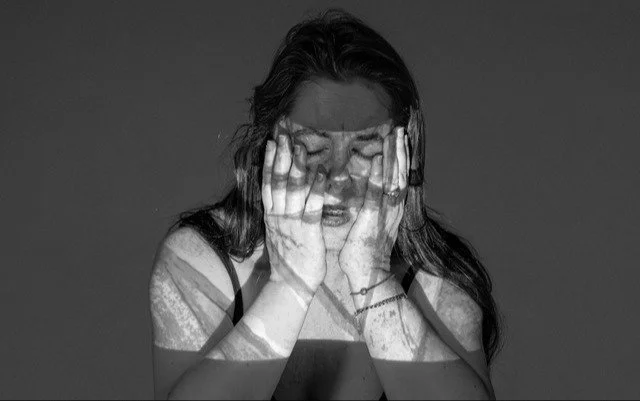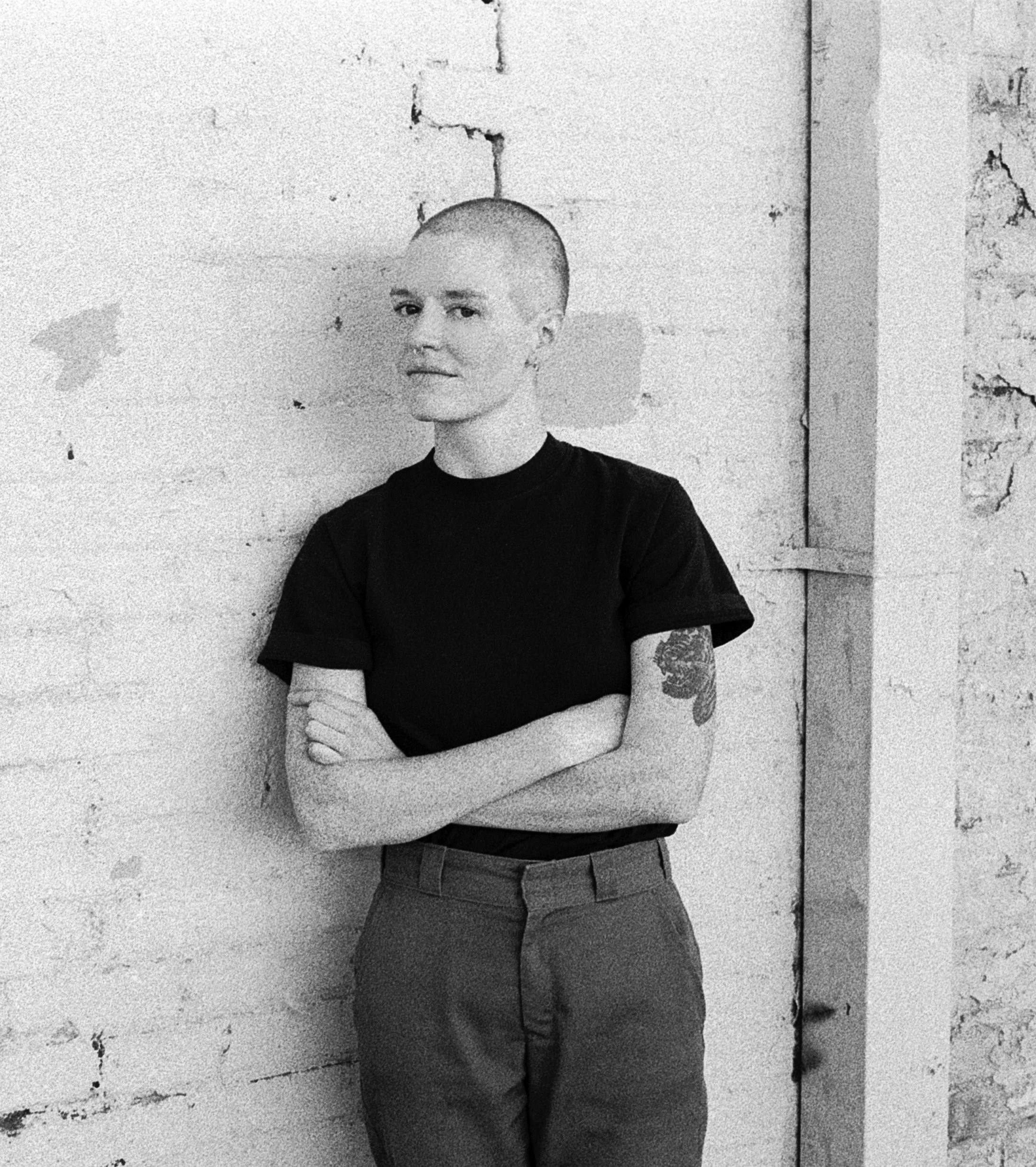The surreal percussive textures of AMY AILEEN WOOD
Amy Aileen Wood is a Grammy Award-winning drummer and producer based in Los Angeles. In addition to her work behind the drum kit, Wood is a composer, engineer, and multi-instrumentalist.
Her percussive sounds can be heard on Fiona Apple’s 2020 record Fetch the Bolt Cutters, which Amy co-produced. Most recently, she composed the score for the Netflix documentary White Hot.
Over the past decade, Amy has performed live or recorded with a variety of artists, including Fiona Apple, The Donnies, The Amys, Blake Mills, Gabby Moreno, David Garza, St. Vincent, Tired Pony, Shirley Manson, Lucy Woodward, and Ultan Conlon.
Her new album, The Heartening, is out now on L.A.’s innovative Colorfield Records.
Interview by Tyler Nesler
Colorfield Records is known for its organic, informal, and experimental recording process. When producer Pete Min approached you about collaborating on an album of your own, had you already heard a lot of Colorfield output? What intrigued you enough about working with him to leave your comfort zone and step further into the spotlight?
Before Pete ever reached out to me, I was familiar with Colorfield Records and his work as a producer. I had listened to Mark Giuliana and Anna Butters’ albums, and I was drawn to the unconventional song structures and unique sounds. I found it refreshing and inspiring. They were well recorded and sonically so pleasing.
When I first met with Pete, what intrigued me about the process was the loss of control. I often record myself and spend a lot of time over thinking so the idea of not having anything prepared and going with whatever comes out first was really appealing to me. I got to come in and just play and Pete got to do all the picking and choosing and editing. It was fun and terrifying and exciting and humbling.
I was definitely out of my comfort zone but immersing in a more organic, informal and experimental recording process was life changing. It felt like a genuine opportunity for personal growth and an exploration of my artistic boundaries that I couldn’t ignore.
The songs on The Heartening sound buoyant to me overall, but with undertones of tension and surreal textures. How do you think this ultimate multifaceted vibe of the album came about? Was it the result of your initial apprehensions mixed with a loosening up once you got deeper into the recording process?
I think the varying tones across the songs stemmed from our choices in initiating each piece and the instruments we opted to use. For instance, in “My Shadow,” we began with percussion on the floor, which Pete slowed down, setting a haunting and unsettling tone, like demented wind chimes.
I definitely grappled with apprehensions at first, being accustomed to working alone and having time to prepare. However, I believe the direction of the songs was more influenced by their initial starting points. Towards the latter stages, with songs like “Bangs” and “Time for Everything,” there was a sense of letting go and embracing vulnerability so maybe it was a little of both but it wasn’t intentional.
You're a multi-instrumentalist, though you're primarily known as a drummer. Can you describe the general process of composition for these songs? Did you tend to start with a foundation of drums and expand out from there with other instruments, or did the process vary a lot song by song?
The composition process for these songs was incredibly varied. We approached each track with different experimentations, kind of allowing the music to take shape in its own unique way. Pete has the ability to start from unconventional places – whether it was a bag of dried leaves, piano, Simmons drum synth, or just textures of percussion playing drums scattered across the floor.
We rarely began with drums, instead, each song took on a life of its own, with its own starting point and creative spark. I think “The Learning Problem” was one of the few exceptions where we started with drums. This approach challenged me to embrace spontaneity and let go of any preconceived notions.
There was a constant sense of anticipation, never knowing where we would begin or what direction the music would take. It was a journey of exploration and creative freedom that ultimately shaped the unique and eclectic sound of the album.
Fiona Apple contributed vocalizations to three songs in ways that weave into the music almost percussively, along with an off-kilter playfulness that's especially apparent with her sighs and laughter on "Time for Everything." You've worked with her a lot recently on her productions - what was it like collaborating with her in this new way? Did your creative relationship evolve in any unexpected directions within this new context?
Instead of following a structured approach, I encouraged her to let her instincts guide her, to simply respond to the music in whatever way felt authentic to her. I think I told her to howl, bark, whatever. I don’t think Fiona even listened to the tracks beforehand; she just hit record and let her creativity flow freely.
The result was raw and uninhibited vocalizations that added a unique dimension to the music. Pete and I sifted through these recordings, seeking out the moments that resonated most with the essence of each song. One particularly memorable instance was during the recording of “Bangs,” where Fiona shared how her dog Mercy unexpectedly interrupted her session. We captured that spontaneous moment and transformed it into a distinctive texture, adding a nice pad to the track.
Working in this way was a departure from our usual approach, but it was so fun, like experiencing the joy of creativity without constraints. It’s what was fun about making this record with Pete. A very playful process.
Several other musicians, including Apple, contributed to this recording. Could you highlight one or two unique contributions from each of them and how these aspects enriched the final outcome?
Sebastian Steinberg’s presence was prominent throughout. He loves to explore unconventional approaches, particularly evident in his arco/air noise sounds on “Rolling Stops.” His collaboration with Fiona added depth to the interplay between instruments. I also love his use of the autoharp through pedals on “The Learning Problem.”
Nicole McCabe blew me away with her saxophone playing, injecting mesmerizing sax textures that added a whole new dimension to the tracks. Wayne played amazing fretless bass on “Number Zero,” sending that song in a new direction that I love.
My wildly talented little sis, Kelsey Wood, added beautifully haunting harmonies on “Slow Light”. John Wood, my dad, added some guitar, even using a power drill as an oscillator, which added a unique texture to the track "Time for Everything.”
Daphne Chen's contribution with beautiful strings on “The Valley” created a rich sonic landscape that I love.
Lastly, Pete’s role in orchestrating and recording the project cannot be overstated. He also played bass in "Time for Everything".
Are there any plans for live performances to support The Heartening? If so, how do you anticipate the performances will unfold? There's a lot of room for live improvisation with these songs that could take them into totally new places onstage.
No plans to play live right now. But when I do, yes, it will be fun to improvise rather than try to play these verbatim.
The Heartening is available now.
Check out all of our other coverage of innovative musicians and bands
Tyler Nesler is a New York City-based freelance writer and the Founder and Editor-in-Chief of INTERLOCUTOR Magazine.







